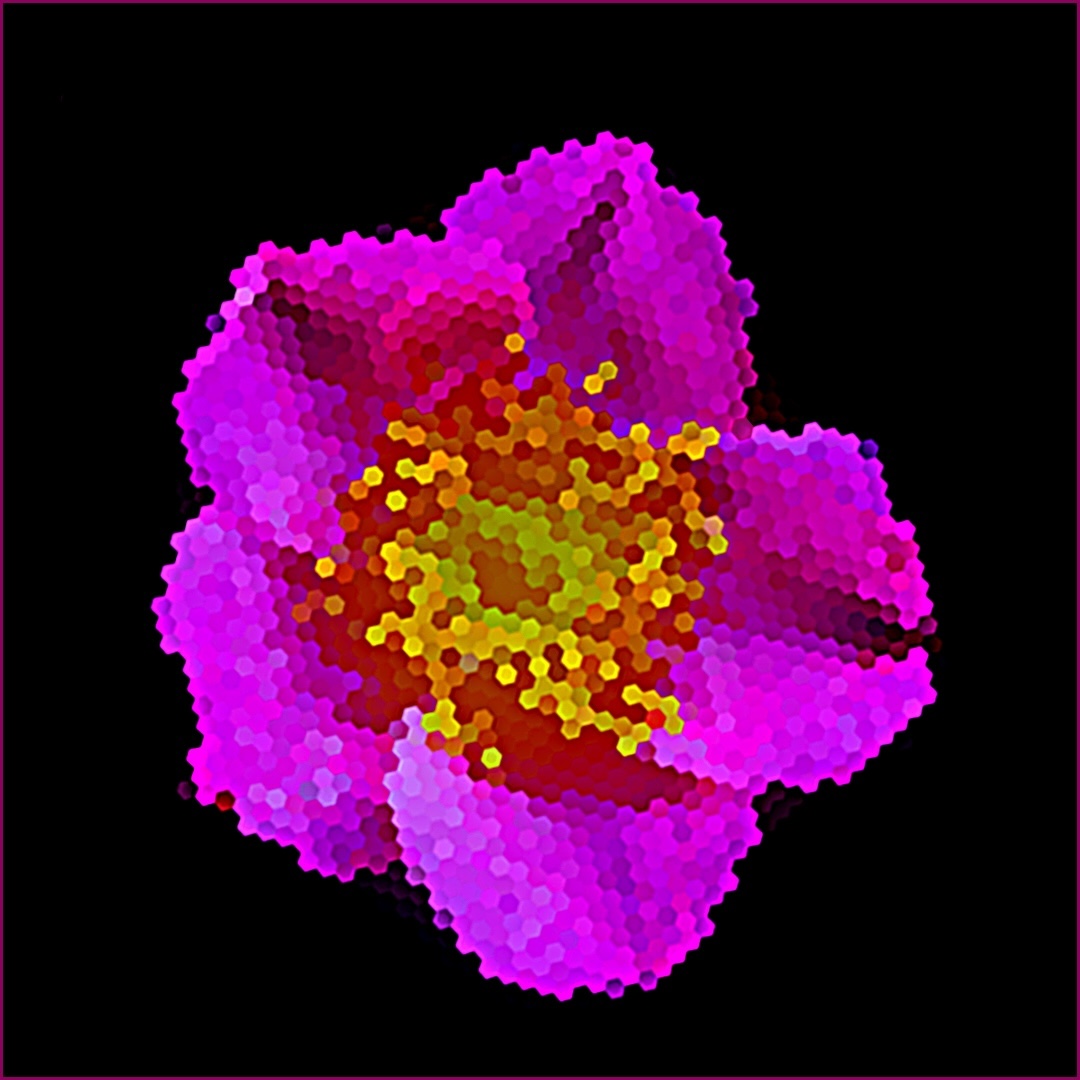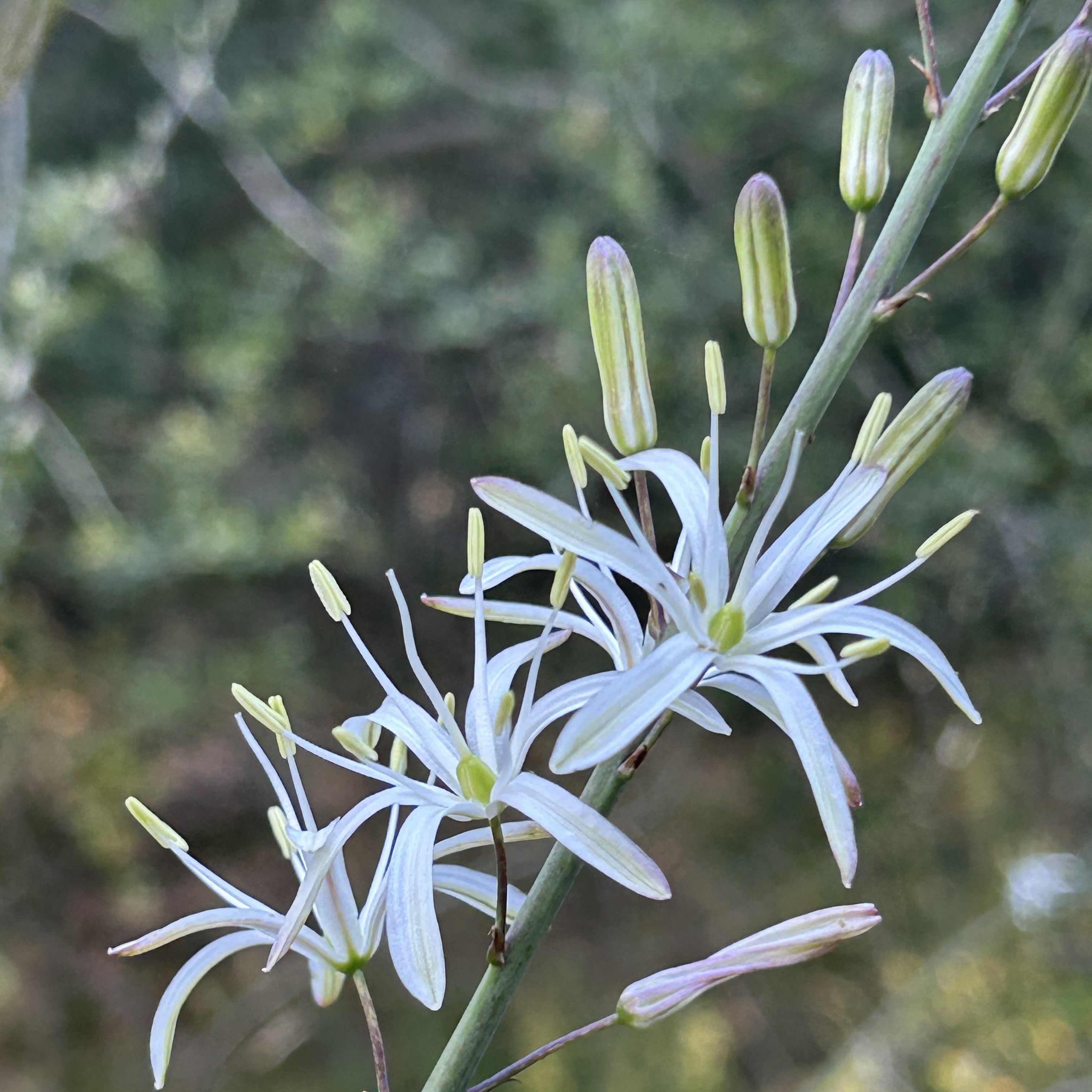Hopefully you can tell from the picture above that this is one seriously beautiful plant. It’s the Wavy Leaf Soap Plant (Chlorogalum pomeridianum) and it blooms in mid-June after most other plants in California have gone into their annual drought survival phase and faded to an unremarkable brown or gray. Consequently, the Soap Plant really “pops” in contrast to the surrounding foliage and gives off orchid vibes. This picture was taken in a moist clearing between two large Coast Live Oaks but I’ve also seen it growing like a weed on the side of dry road cuts. I am confused by this. The range map shows it growing from southern Oregon down through virtually all of California, so it should be everywhere. But it’s not, and I don’t have a great sense of where to find it yet.
Anyway, as I researched this plant, I was surprised to learn that it is related to Yucca and Agave. You can kind of see a similarity in the flowers I think, but Yucca would not have been my first guess. Like Yucca, a frothy soap can be made from the roots and this is where the plant gets it name. The Miwok and Karuk peoples are well documented as using it as a detergent for hair and clothing. But in what way is this plant mighty? Well, beyond soap, the Native Americans figured out a surprisingly long list of practical uses for it.
The root bulbs of Soap Plant contain toxic saponins and are not edible raw. But saponins are not well absorbed by humans and are easily destroyed by heat – so the Chumash people ate roasted bulbs as a winter staple. The taste is described as ‘sweet and oniony’ by contemporary reviewers and I might just try it some day. Indigenous peoples also noticed that the juice oozing from roasting bulbs thickened into a nice, sticky paste. This was then used as a glue to attach feathers to arrow shafts and seal leaky baskets. The raw paste was used to cure animal hides and as an antiseptic. It was even taken orally in small amounts as a diuretic and laxative.
Now for the best use of all… Many native peoples (the Lassik, Luiseno, Yuki, Yokuts, Chilula, Wailaki, Miwok, Katol, Mattole, Nomlaki, and Nishinam) discovered they could pulverize dried roots, mix the resulting powder into a stream, and the saponins would incapacitate or even kill fish. They would then collect fish from the surface of the water, cook them, and enjoy a perfectly safe meal. My guess is that someone was down at the river washing their hair one day and noticed the effect it had on fish. Similar uses were discovered by California tribes for the Yucca, Buckeye, and Dove Weed plants.
The delicate flowers of the Soap Plant open in late afternoon and remain open through the evening when they are pollenated by moths and other night-flying insects. That is downright goth.
So let’s summarize things: food, medicine, arrow glue, fish poison, photogenic af, fond of nocturnal hook-ups. I love this crazy plant and it qualifies as mighty to me.
If I can ever figure out the microhabitat thing, I’ll update this post and let you know.

